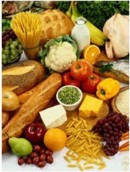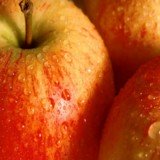The Glycemic Index Diet Plan
The glycemic index diet plan is an important aspect in the management of diabetes and in diabetic nutrition. Diet plays a very important role in the lives of those who have diabetes. It is more that crucial that they have a healthy eating lifestyle in order to overcome the many ills and challenges associated with diabetes. It is also to their advantage that diabetics know and understand how the glycemic index, GI, affects blood sugar levels. A scale of 0 to 100 is used in the glycemic index. The classification is as follows:
- high glycemic index foods are those that have a GI of 70 and above.
- medium glycemic index foods are those that have a GI which ranges from 56-69.
- low glycemic index foods are those that have a GI of 55 and below.
 The low glycemic food list is very useful in that it shows you the different kinds of foods that you can zoom in on. In addition you may include more of these foods in your diet and avoid or eat in moderation the foods that have a high glycemic index. So what is this glycemic index, you may be wondering? Simply put, it is the measure of the effect that foods, carbohydrates have on your blood sugar level. A low glycemic index food would be one which is broken down and digested slowly by your body thereby providing much needed sustained energy for the individuals.
The low glycemic food list is very useful in that it shows you the different kinds of foods that you can zoom in on. In addition you may include more of these foods in your diet and avoid or eat in moderation the foods that have a high glycemic index. So what is this glycemic index, you may be wondering? Simply put, it is the measure of the effect that foods, carbohydrates have on your blood sugar level. A low glycemic index food would be one which is broken down and digested slowly by your body thereby providing much needed sustained energy for the individuals.
In other words, low glycemic index foods provide blood sugar level stability. On the other hand, foods with a high glycemic index are converted to sugar more quickly and release glucose into the blood stream rapidly. This causes blood sugar levels to spike. These kinds of foods would be a great way to boost your system should your blood sugar level fall too low (hypoglycemia). Although generally speaking, such foods should be avoided in high quantities to avoid complications in the management of diabetes that can be caused by wide fluctuations in blood sugar levels.
 There are certain high GI foods that you can eat from time to time in moderation. You may also include them in your glycemic index diet plan in order to maintain a healthy blood sugar level. These foods include brown rice, baked potato, bananas, cheese, watermelon, white rice, popcorn, potato chips and honey. Research encourages that just two of your meals in a day should consist of low GI foods. This came about because it was realized that too much emphasis on the low glycemic index foods can lead to dangerously low levels of blood sugar. This is also referred to as hypoglycemia.
There are certain high GI foods that you can eat from time to time in moderation. You may also include them in your glycemic index diet plan in order to maintain a healthy blood sugar level. These foods include brown rice, baked potato, bananas, cheese, watermelon, white rice, popcorn, potato chips and honey. Research encourages that just two of your meals in a day should consist of low GI foods. This came about because it was realized that too much emphasis on the low glycemic index foods can lead to dangerously low levels of blood sugar. This is also referred to as hypoglycemia.
Below is a list of the high glycemic index foods. To get a list of the medium to low glycemic food list you may follow the link.
High Glycemic Index Food List
Food |
Glycemic Index |
| Tofu low fat frozen dessert | 115 |
| Dried dates | 103 |
| Parsnips | 97 |
| French baguette bread | 95 |
| Baked red skin potatoes | 93 |
| 1 slice gluten-free bread made with spelt | 90 |
| Medium red skinned boiled potato | 88 |
| Kellogg's corn flakes | 84 |
| Cornflakes | 80 |
| 10 large jelly beans | 80 |
| Overripe banana | 82 |
| Vanilla cookies | 77 |
| Waffle | 76 |
| Cinnamon and sugar doughnut | 76 |
| Pumpkin | 75 |
| Honey | 75 |
| Large pack french fries | 75 |
| Corn chips | 73 |
| 1 Kaiser roll | 73 |
| Rutabaga | 72 |
| Bagel | 72 |
| Whole grain bread | 72 |
| Watermelon | 72 |
| Saltine crackers | 72 |
| 1 cup short grain white rice | 72 |
| Millet | 71 |
| 6 pieces Melba Toast | 70 |
| 1 slice white bread | 70 |
| Corn Tortilla | 70 |
So what affects the glycemic index?
 Glycemic index can be altered because of various reasons. For one, our bodies' chemical makeup differ from one person to the other. Also the way our bodies use insulin and our blood sugar levels differ. The way in which food is prepared, it's protein and salt content and the type of food are all factors which may cause glycemic index to alter. However, there are certain key elements across the board that contribute to the altering of glycemic index. The first one has to do with the acid content of the food. Acid has a tendency of lowering the rate at which food is digested. Therefore foods that contain citrus stuff like lime juice will be low glycemic index foods, and you can include these in your glycemic index diet plan.
Glycemic index can be altered because of various reasons. For one, our bodies' chemical makeup differ from one person to the other. Also the way our bodies use insulin and our blood sugar levels differ. The way in which food is prepared, it's protein and salt content and the type of food are all factors which may cause glycemic index to alter. However, there are certain key elements across the board that contribute to the altering of glycemic index. The first one has to do with the acid content of the food. Acid has a tendency of lowering the rate at which food is digested. Therefore foods that contain citrus stuff like lime juice will be low glycemic index foods, and you can include these in your glycemic index diet plan.
 Secondly, things like beans have a fibrous coating. This coating makes it difficult for the digestive enzymes to penetrate through quickly, thereby slowing down the digestion of the starch in them. This therefore makes such foods have a low glycemic index. Thirdly, swollen starch, such as that found in oatmeal and spaghetti, is digested slowly and the result is a low GI. Lastly, foods like lentils and legumes have high amylose content. What amylose does is that it absorbs less water and is therefore digested at a slower rate, giving the foods a low glycemic index. So it will be a great idea to also include these food types in your glycemic index diet plan.
Secondly, things like beans have a fibrous coating. This coating makes it difficult for the digestive enzymes to penetrate through quickly, thereby slowing down the digestion of the starch in them. This therefore makes such foods have a low glycemic index. Thirdly, swollen starch, such as that found in oatmeal and spaghetti, is digested slowly and the result is a low GI. Lastly, foods like lentils and legumes have high amylose content. What amylose does is that it absorbs less water and is therefore digested at a slower rate, giving the foods a low glycemic index. So it will be a great idea to also include these food types in your glycemic index diet plan.
 The glycemic index diet plan, as mentioned earlier, is important because it is one of the tools used in the management of diabetes. It is especially useful for diabetics who experience sudden spikes in their blood sugar levels after eating a meal. Choosing a low glycemic food would therefore be very beneficial. However, during a strenuous activity, like a work-out at the gym or just exercising, a higher glycemic food will be needed if your blood sugar levels go down.
The glycemic index diet plan, as mentioned earlier, is important because it is one of the tools used in the management of diabetes. It is especially useful for diabetics who experience sudden spikes in their blood sugar levels after eating a meal. Choosing a low glycemic food would therefore be very beneficial. However, during a strenuous activity, like a work-out at the gym or just exercising, a higher glycemic food will be needed if your blood sugar levels go down.
The only disadvantage of this diet is that the impact that food has on blood sugar levels varies greatly, depending on the how ripe the food is, the time of day, cooking time, amount of fiber and fat content in the foods. So you can keep a food journal to note the changes in your blood sugar levels after certain meals or exercising so you know just what to include in your glycemic index diet, and when to eat the different foods. The main objective of the glycemic index is to regulate insulin related problems and minimize the consumption of foods that increase blood sugar levels.
 You can also use your blood sugar meter regularly to check and monitor your blood sugar level. The glycemic index diet plan will certainly make things easier for you in the management of diabetes. You can also check out healthy cooking recipes for diabetics, snacks for diabetics and diabetic holiday recipes which will help you out in your diet plan.
You can also use your blood sugar meter regularly to check and monitor your blood sugar level. The glycemic index diet plan will certainly make things easier for you in the management of diabetes. You can also check out healthy cooking recipes for diabetics, snacks for diabetics and diabetic holiday recipes which will help you out in your diet plan.


